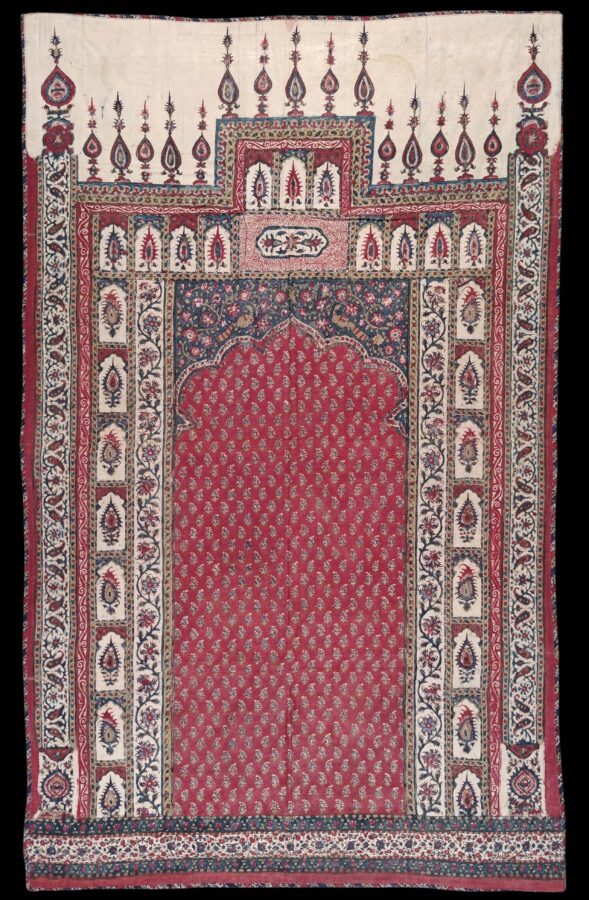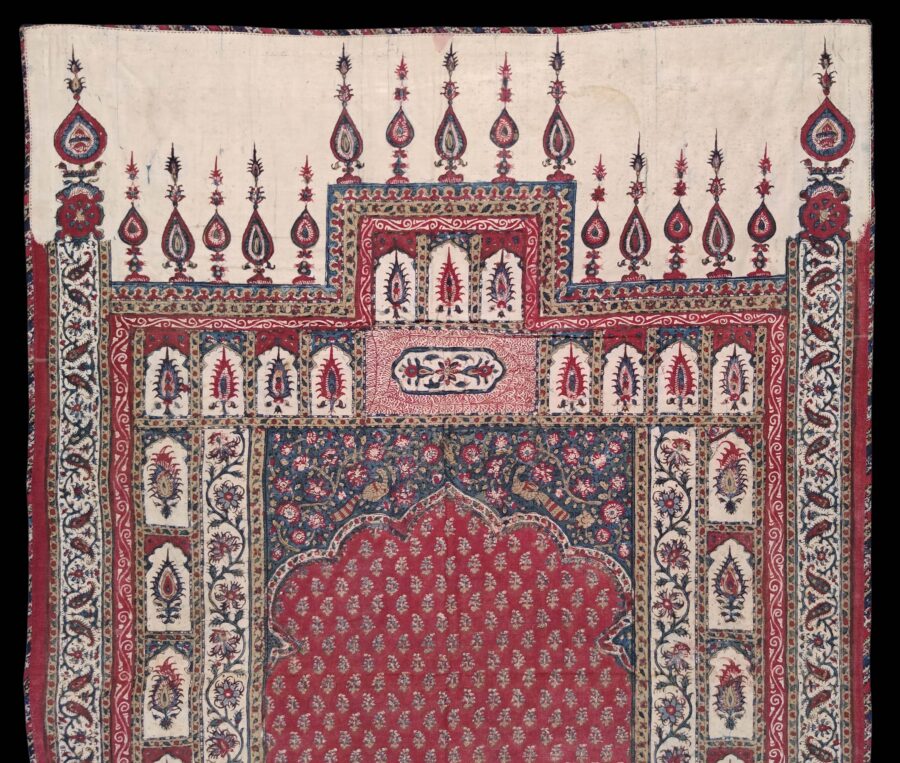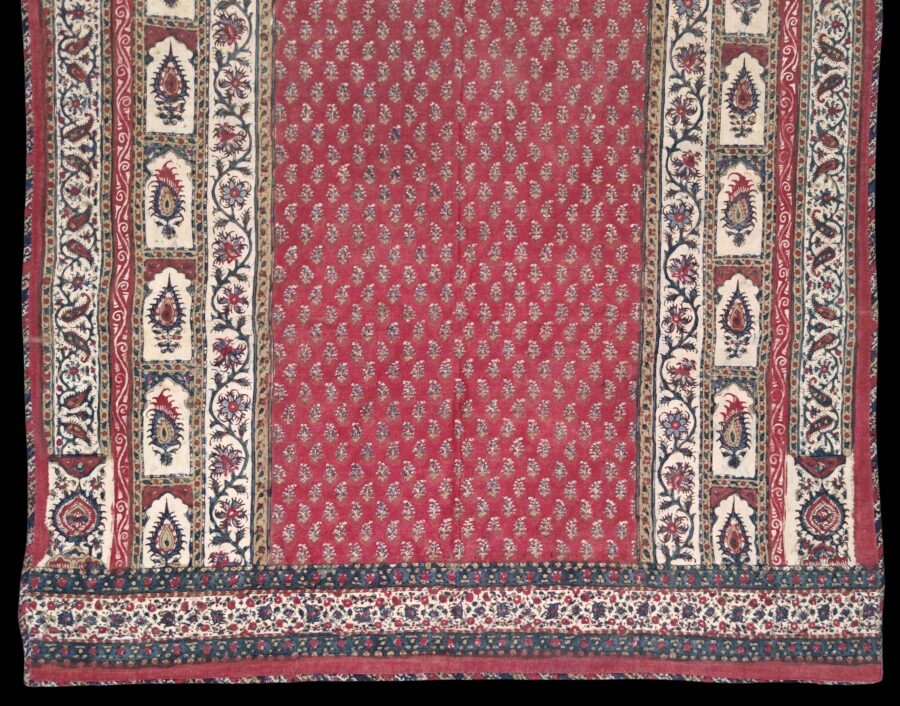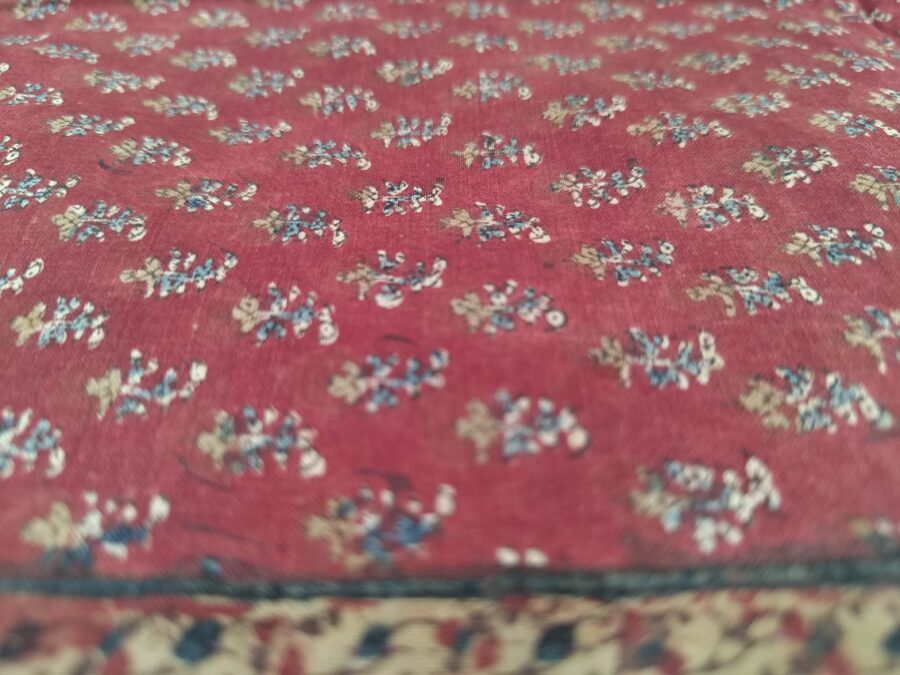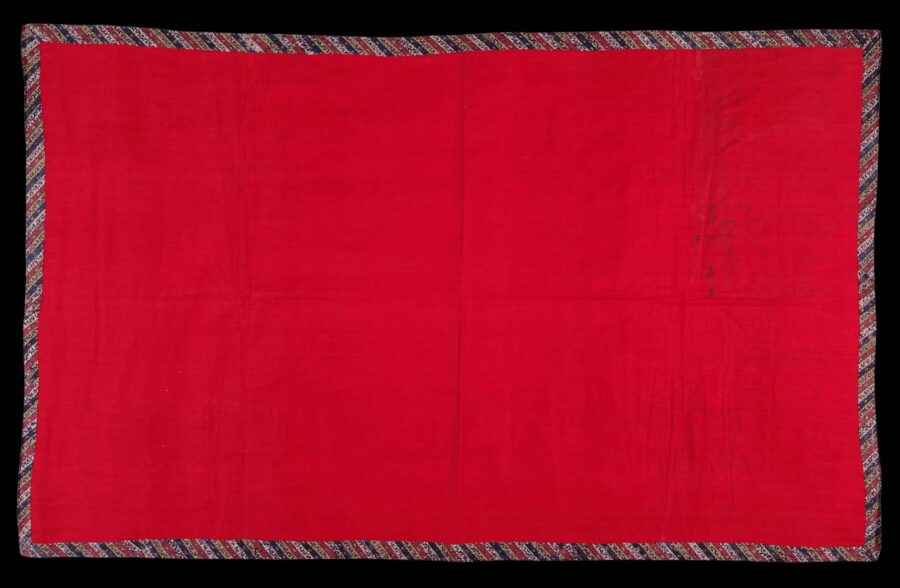Enquiry about object: 9721
Export Indian Dyed Cotton Prayer Cloth (Jainamaz)
Machilipatnam, Andhra Pradesh, India circa 1850
height: 88.2cm, width: 54cm
Provenance
UK art market
Prayer cloths such as this well-preserved example were produced in Machilipatnam (Masulipatam) in Andhra Pradesh state in India for the local Muslim community, and for Islamic export markets which included Persia and Indonesia. (Armenian traders were significant players in this trade at the time.) It is believed that versions were also produced in Persia in the 19th century based on the Indian imported examples.
It is of cotton and decorated in the delicate, floral kalamkari technique associated with Machilipatnam.
The designs are a combination of being block-printed and hand-drawn onto the cloth, usually with a bamboo pen, which was also used to apply wax resist and mordants.
The cloth has an architectural design based on a mihrab (prayer arch). The central red field is populated by Mughal-like stylised flower sprays, and to each side of the arch a tall spire-like trees which probably are based on the cypress. A pair of peacocks amid shrubbery decorates the field above the arch.
The textile is backed or lined with red cotton sheet. Other examples are similarly backed, suggesting that it was done locally and at the time of manufacture.
Related examples are illustrated in Barnes et al (2002, p. 87), and Crill (2015, p. 99). Examples made for the Indonesian market are illustrated in Maxwell (2003, p. 344). Two versions believed by the author to be Persian examples based on Indian prototypes are illustrated in Wearden (2015, p. 80 & p. 83).
The example here is in near-perfect condition and yet has clear age.
References
Barnes, R., S. Cohen, & R. Crill, Trade, Temple & Court: Indian Textiles from the Tapi Collection, India Book House, 2002.
Crill, R., (ed.), The Fabric of India, V&A Publishing, 2015.
Maxwell, R., Textiles of Southeast Asia: Tradition, Trade and Transformation, Periplus, 2003.
Wearden, J., Decorative Textiles from Arab & Islamic Cultures: Selections from the Al Lulwa Collection, Paul Holberton Publishing, 2015.


